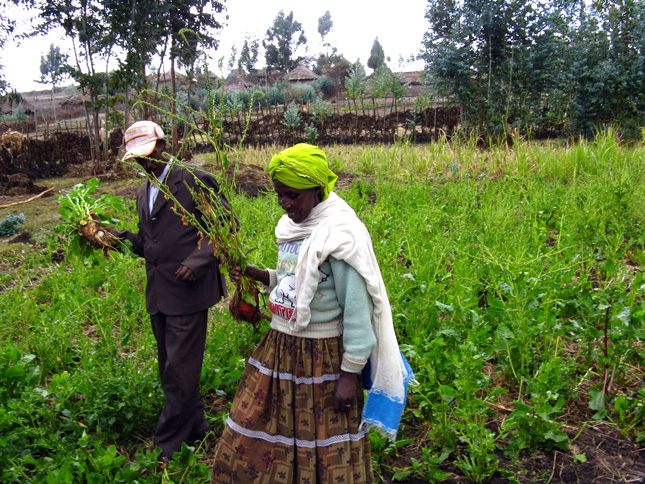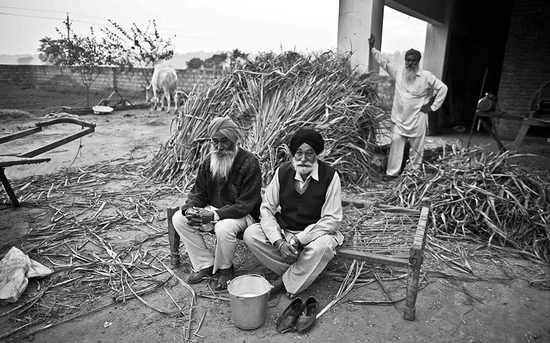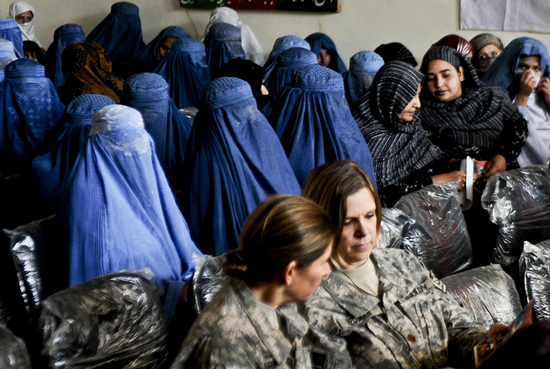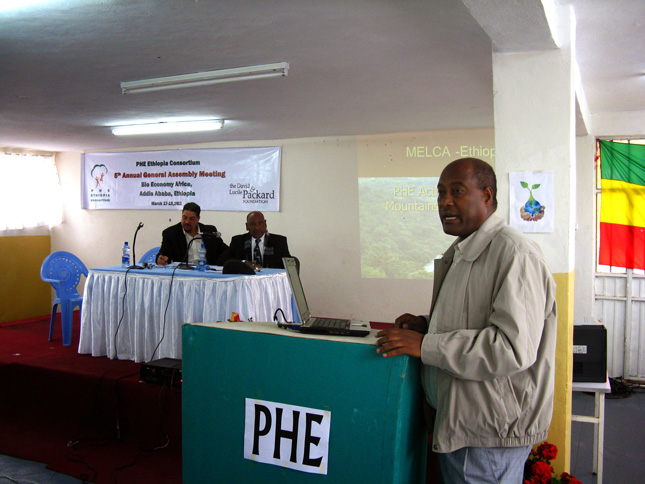-
Book Launch: ‘The Future Faces of War: Population and National Security,’ by Jennifer Dabbs Sciubba
›“Demographic trends by themselves are neither inherently good nor bad. It’s really a state’s ability to address these issues that can determine the outcome,” said Jennifer Dabbs Sciubba, the Mellon Environmental Fellow with the Department of International Studies at Rhodes College. At a book launch event at the Wilson Center on March 14 for The Future Faces of War: Population and National Security, Sciubba, along with Deputy Under Secretary Kathleen Hicks of the Department of Defense, discussed the national security implications of demography and its important role in understanding and managing conflicts around the world. [Video Below]
Demography as an Indicator, Multiplier, and Resource
Demography can be thought of in three ways, explained Sciubba: as “an indicator of challenge and opportunity; a multiplier of conflict and progress; and a resource for power and prosperity.”
A country’s age structure can pose a challenge, said Sciubba, because countries with a large percentage of their population under the age of 30 “are about two and a half times more likely to experience civil conflict than states with more mature age structures.” Tunisia’s recent revolution, she said, could be understood as a “story about demography.”
The 26-year-old fruit vendor Mohammed Bouazizi, who set himself on fire on December 17 after being hassled by police, was part of one of the largest age cohorts in Tunisia, those aged 25-29. There are some 64 million young men across the Middle East-North Africa region between the ages of 15 and 30, according to UN estimates. “If his death was the spark” for the unrest in the region, Sciubba said, “it’s the underlying demographic trends that were the fodder.”
Yet, Sciubba sees opportunity within this challenge. Citing the work of Richard Cincotta, she said that “states have half a chance – literally 50 percent – of becoming a democracy once their proportion of youth declines to less than 40 percent.” Tunisia has the best chance in the region of becoming a free democracy based on its demography, followed by Libya, where youth aged 15-29 are 43 percent of the adult population.
At the other end of the age structure, some of the world’s most powerful countries, such as Japan, Germany, Italy, France, Russia, and China, are rapidly aging. This aging will “somewhat decrease the ability of these states to project political, economic, and military power” due to a shortage of labor and a smaller pool of funding, said Sciubba.
Countries with transitional age structures, such as India, Brazil, and South Africa, face different security challenges. With a majority of their populations between 15 and 60 years old, there are more people contributing to the economy than are taking away, which could bolster these countries economically and politically (the “demographic dividend”). Global institutions will have to reform and include these countries, she advised, “or else become irrelevant.”
But the defining trend of the 21st century, said Sciubba, is urbanization. While great sources of economic growth, cities are also quite vulnerable to natural disasters and terrorism because of their concentrations of people, wealth, infrastructure, and bureaucracy.
In looking to the future, Sciubba called for continued support for family planning initiatives. “At least 90 percent of future world population growth will take place in less developed countries,” which are least equipped to handle the demands of that growth, she said. In addition, Sciubba recommended that the United States seek out partnerships with countries that have transitional age structures, particularly India, which could be a stabilizing force in a tumultuous region. She also called on the United States to partner with states in the Western Hemisphere and remain open to migration.
Defense and Demography
“Understanding population is critical to our success in being able to prevent conflict, and also managing conflict and crises once we’re involved,” said Hicks, describing the Department of Defense’s (DOD) interest in demography. However, the DOD does not “treat demographics as destiny,” she said, but instead as “one of several key trends, the complex interplay of which may spark or exacerbate future conflicts.”
Recent world events, such as those in the Middle East and North Africa, “have demonstrated how critical our understanding of population is for security practitioners,” said Hicks. Similarly, the recent earthquake and tsunami in Japan dramatically illustrate the vulnerability of large urban areas. Echoing Sciubba’s comments on population aging, she cited “incredible divestments in defense” in Europe, which, she said, “puts us, as a key partner in NATO, at a thinking stage.”
Under Secretary of Defense for Policy Michèle Flournoy is “deeply interested” in demographic issues, said Hicks. She identified other demographic areas of great interest for her office: the youth bulge in Pakistan, urbanization in Afghanistan, the role of highly educated women in Saudi Arabia, the Chinese diaspora in the Americas, Russia’s shrinking population, and various trends in China, including aging, gender imbalance, urbanization, and migration.
Image credit: “Iraq,” courtesy of flickr user The U.S. Army.
Sources: ECSP Report 12, Financial Times, The New York Times, Population Reference Bureau, UN Population Division. -
Watch Michael Renner on Improving Environmental Peacebuilding by Moving From the Technical to the Social
›“When we think about environmental peacebuilding opportunities…at a certain level it seems like a very straightforward, almost technical task,” said Michael Renner, senior researcher at the Worldwatch Institute, in this interview with ECSP. “But really stepping back, in a sense, this is far more than just a technical issue – it’s a broader social and, ultimately, political issue.”
As well as reducing tensions in conflict-prone areas, environmental peacebuilding – like reforestation and land/water management initiatives – can have a great impact on local livelihoods. Renner discussed the importance, therefore, of working alongside affected communities to address specific, long-term needs. “You need to have a buy-in from the local communities,” he said. “If you don’t, you may well undertake these efforts, but it’s not very clear how long they can last and how successful they can be.”
“I think it’s very important to understand these as challenges from an interdisciplinary point of view, that really require us not to think in terms of just ‘what’s the best technology, what’s the best practice,’” Renner said. “But also ‘how do we ensure really that this links up with the needs on the ground of specific communities?’” -
Michael Kugelman, World Politics Review
The Gathering Global Food Storm
›March 28, 2011 // By Wilson Center StaffThe original version of this article, by Michael Kugelman, appeared on World Politics Review.
In India’s vibrant capital, food seems to be everywhere – from bustling fruit and vegetable markets and greasy kebab stalls, to sumptuous platters in rooftop restaurants and dilli ki chaat, Delhi’s ubiquitous street snacks. Poor street vendors and high-end chefs alike offer a multitude of culinary options to keep the city – and its array of visiting tourists, diplomats and business leaders – well-fed.
Yet behind this apparent culinary prosperity lies rampant food insecurity. Food-related inflation in India soared above 18 percent in December, sparking street protests over high onion prices. Today, food-related inflation remains high, at nearly 12 percent. In a nation where at least 250 million subsist on less than a dollar a day, even modest price rises have a devastating impact on incomes and livelihoods. Yet, when food prices fall, India’s small farmers suffer. Already crippled by debt and encumbered by water shortages, 200,000 of them have committed suicide over the past 13 years.
India is not alone in this story. Just a few years removed from the 2007-2008 global food crisis, the world is once again experiencing the telltale drivers of acute food insecurity: rising prices of both food and oil, low agricultural yields, destructive weather and unquenchable demand. Once again, nations are banning exports in an effort to keep prices down at home – even as such policies drive up food costs in global markets. The consequences can be seen from Bolivia, where top government officials are hoarding food in their homes, to the Middle East, where the rising cost of basic foodstuffs has become a rallying cry for revolution.
Continue reading on World Politics Review.
Michael Kugelman is a program associate for the Asia Program at the Wilson Center and lead editor of Hunger Pains: Pakistan’s Food Insecurity and Land Grab? The Race for the World’s Farmland.
Sources: The Economist, India’s Contemporary Security Challenges, CNN, The Washington Post.
Photo Credit: Adapted from “India’s Food Crisis,” courtesy of flickr user lecercle. -
Eric Zuehlke, Behind the Numbers
Building a Gender Strategy for the Afghanistan Ministry of Public Health
›March 25, 2011 // By Wilson Center StaffThe original version of this article, by Eric Zuehlke, appeared on the Population Reference Bureau’s Behind the Numbers blog.
Recent media reports have focused on the stalled progress for women in Afghanistan and the shift in the international community’s focus as they take steps towards an eventual military withdrawl. Although there’s much work to be done, it’s important to note that there has been tangible improvement for women in Afghanistan. A decade ago, women weren’t allowed to go out in public alone. Girls weren’t allowed to attend school – now 57 percent of girls are in school. And gender issues are now being integrated into government policy.
At an Interagency Gender Working Group (IGWG) Plenary in honor of 2011 International Women’s Day hosted by PATH in Washington DC, Karen Hardee, a senior fellow at PRB and president of Hardee Associates, presented her involvement towards developing the National Gender Strategy for the Afghanistan Ministry of Public Health for 2011-2015. Much international development program and policy advocacy calls for attention to “gender,” but what does the term mean? “Gender isn’t just about women,” said Hardee, but is defined as the social roles that men and women play because of the way society is organized. But these roles aren’t set in stone; they can change over time.
Funded by USAID, the Health Services Support Project worked with the Afghan government to create a plan to integrate gender considerations into all public health programs and policies, focusing mostly on mental health and gender-based violence. Interestingly, the impetus of the process stemmed the initiative of a male official in the Ministry of Public Health who requested assistance to write a plan to integrate gender into the Ministry’s policies and programs. Having participated in WHO-sponsored gender training workshops in the past, he understood the importance of mainstreaming gender awareness for both men and women. It’s a great example of the tangible effects of the work being done on gender by NGOs and international donors.
Continue reading on Behind the Numbers.
Sources: The Guardian.
Photo Credit: “PRT, ADT women help celebrate Women’s Day in Kunar,” courtesy of flickr user DVIDSHUB. -
Integrated Approach Helps “Model Farmers” Increase Productivity in Ethiopia
›March 24, 2011 // By Schuyler Null
To reach the village of Grar Gaber from Addis Ababa, you drive up over the Entoto Mountains overlooking the capital then motor down two hours of new Japanese-built highway to the town of Fiche. From there it’s 20 minutes on a broken dirt road across rocky hills. I was joined there by about 20 others from the PHE Ethiopia Consortium’s general assembly (see day one and day two coverage here) and Population Action International, to visit an integrated population, health, and environment (PHE) development program run by LEM Ethiopia.
-
The Youth of North Africa
Surging on a Knife’s Edge
›March 23, 2011 // By Christina DaggettThe Middle East/North Africa region is experiencing a “youth surge,” said Jack Goldstone, director of the George Mason University’s Center for Global Policy, at a recent GMU event. “In the last two decades the number of people in their late teens and twenties has increased… It’s doubled in Egypt; it’s grown by half in Tunisia; and nearly doubled in Libya,” he told Warren Olney on KCRW’s To the Point. Such youth surges are problematic because, Goldstone wrote in ECSP Report 13, “population distortions – in which populations grow too young, or too fast, or too urbanized – make it difficult for prevailing economic and administrative institutions to maintain stable socialization and labor-force absorption.”
Such youth surges are problematic because, Goldstone wrote in ECSP Report 13, “population distortions – in which populations grow too young, or too fast, or too urbanized – make it difficult for prevailing economic and administrative institutions to maintain stable socialization and labor-force absorption.”
In the case of Egypt, the youth surge put enormous pressure on a government system that could no longer guarantee jobs to every college graduate, said Goldstone. When government guarantees dried up, graduates found that their poor-quality degrees were of little use, especially in a system that prioritized connections and bribery. The result was an unemployment rate of 25 percent among Egyptian youth and a mounting sense of frustration with the economic system and the government.
This frustration found a symbol when Mohammed Bouazizi, a 26-year-old Tunisian, set himself – and an entire region – on fire after his third run-in with the police cut off his only source of income. Youth across North Africa and the Middle East, Goldstone said, could identify with Bouazizi’s desperation and frustration after years of dealing with a closed economic system and a corrupt government.
While overall economic growth has been strong in the region – a fact which had misled many observers (including himself, Goldstone admits) into thinking the region was more stable – these economic gains were apparently being captured by the ruling elite to a far greater degree than previously thought, said Goldstone. For example, it is estimated that ousted Egyptian president Hosni Mubarak and his family are worth between $40 and $70 billion.
Meanwhile, a burgeoning surge of young people were struggling to get by. Goldstone pointed to a Gallup poll conducted in 2010 in which only 12 percent of Egyptians and 14 percent of Tunisians would classify themselves as “thriving” – down from 25 and 24 percent, respectively, in 2007 and 2008.
While the Ben Ali and Mubarak regimes have fallen, these revolutions do not ensure the youth in these countries will have a prosperous future. They need not only access to capital, said Goldstone, but also access to information and social networks so that they can identify market opportunities and stay connected.
Immigration to more developed countries could also be an important avenue for economic growth and education. In a Foreign Affairs article, “The New Population Bomb,” Goldstone writes, “Given the dangers of young, underemployed, and unstable populations in developing countries, immigration to developed countries can provide economic opportunities for the ambitious and serve as a safety valve for all.”
The future of Middle Eastern youth, and that of the region at large, depends on the quality of their education and their ability to be productive, said Goldstone. They stand on “a knife edge,” he said, and the transition to democracy will not be smooth or easy.
Image Credit: “Protest Face Paint,” courtesy of flickr user Ahmad Hammoud.
Sources: The Economist, ECSP Report 13, Foreign Affairs, Gallup, International Monetary Fund, KCRW, Voice of America. -
Watch: David Lopez Carr and Liza Grandia on Rural Population Growth and Development in Guatemala
›March 22, 2011 // By Hannah MarquseeDemographers today are largely concerned with two trends: aging in the developed world, and rapid urbanization in the developing world. The majority of people in the world now live in cities, “but this tiny fraction of people that live in rural areas – concealed by the data because it’s a small fraction – still have very high fertility rates, precisely where protected areas are,” said David Lopez-Carr, associate professor of geography at the University of California, Santa Barbara in this ECSP interview.
“You see a gradient. The more rural, the more remote, the higher fertility,” said Carr. In Guatemala, for example, fertility rates range from below four children per woman in Guatemala City, to as high as eight in the remote Maya biosphere reserve, which is mostly indigenous. “These are the populations that are growing the fastest and the ones who are living in direct proximity and whose livelihoods are predicated directly on the rainforest, whether it’s through resource extraction or…agricultural expansion,” said Carr.
Liza Grandia, assistant professor of international development and social change at Clark University, spent many years working in the Maya biosphere reserve with the Guatemalan NGO ProPeten to address deforestation. However, after years of alternative livelihood projects, “it became clear that many of those efforts would be undermined by population growth and continued migration into the region,” she said in an interview with ECSP.
Grandia and ProPeten conducted a study as part of the Demographic and Health Surveys to examine the linkages between health, population, and environmental trends in the Peten region. Based on these findings, Grandia founded Remedios, a program that partnered with International Planned Parenthood Foundation and the Guatemala Ministry of Health to provide family planning services to “one of the most remote places in Latin America.”
Remedios used mass media, such as the radio soap opera “Between Two Roads,” broadcast in Spanish and Q’eqchi’ Maya, to reach people across this remote region. In the popular soap opera, “the villain is a cattle rancher, the heroine is a midwife, and through the tales of daily life in this village we weave in messages about domestic violence, use of family planning, agrarian problems, like land speculation, and a whole host of other issues that come up in people’s daily lives,” said Grandia. “In three years as a result of that work, the total fertility went from 6.8 to 5.8. To date, 10 years later, it’s dropped to 4.3.” -
The Continuing Challenges of Integrated Development
›March 20, 2011 // By Schuyler Null
“How are we going to feed all these mouths?” asked Bekele Hambissa, director of the Environmental Protection and Development Organization in Addis, on day two of the PHE Ethiopia Consortium general assembly (read about day one here). Environmental resources are directly tied to Ethiopia’s population growth, said Hambissa, during a discussion of balancing efforts to address population growth, environment, and livelihoods. While poverty alleviation is an important goal of population, health, and environment integration (PHE), it must be environmentally sustainable, he said.
Yearly archive for 2011.
Show all posts









